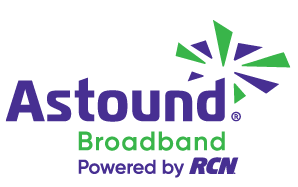HouseholdsIn Alaska, the aggregate number of households is 330,487 |
Median IncomeHouseholds in the state of Alaska have a median income of $68,931. |
PopulationThe total population in the state of Alaska is 748,879 |
DSL TechnologyApproximately 89.15% of consumers in the state of Alaska have access to DSL internet |
Fiber TechnologyApproximately 1.94% of consumers in the state of Alaska have access to fiber-optic internet. |
Cable TechnologyApproximately 78.76% of consumers in the state of Alaska have access to cable internet. |
Wireless TechnologyApproximately 93.88% of consumers in the state of Alaska have access to mobile broadband internet. |
Average upload speedFor residents in the state of Alaska, the state-wide average upload speed is 5 Mbps |
Average download speedFor residents in the state of Alaska, the state-wide average download speed is 10 Mbps. |
Internet Service Providers in Alaska


Call (858) 947-7574

Internet Service Providers in Alaska

Comparing the Best Internet Service Providers in Alaska
Are you trying to decide the best Internet connection type for your needs? You may have heard of options like DSL, cable, fiber optic, and satellite, and the sheer number of choices can be overwhelming. Which is the fastest? Which will best run Skype, video conferencing, and telephony applications? Which connection can provide me with Internet service in remote locations? Here is a short summary of the different options for Internet service in Alaska and their advantages and disadvantages.
The state of Internet technologies has advanced dramatically in the past few years, flooding the market with different providers and competitive packages of services. Download speeds are increasing, connectivity and reliability are improving, and prices seem to be dropping every day. The bundling of services such as Internet, television, and even telephone can help customers find a comprehensive package for all their needs for a low monthly price but can add to the sense of confusion and overwhelmingness.
Thus enters MyRatePlan, providing customers with easy access to the best deals and packages for Internet service in Alaska and elsewhere. By keeping data on various area service providers and packages, MyRatePlan can help match customers with the plan that is right for their needs. Customers can simply enter their ZIP code and find the best high-speed Internet options for their area. MyRatePlan can even help customers to find an Internet package which will work with their existing phone and television services. Customers looking for business Internet options can use a separate area of the website to find the best business Internet packages and deals, while all users can benefit from the MyRatePlan Internet Speed Test tool. With this tool you can test the download speed of your current Internet service, even if you do not have Java or Flash installed on your computer.

Cable Providers in Alaska
Most cable companies in Alaska can provide services such as telephone, TV and high-speed Internet through various methods. Some of these methods include the conventional coaxial cables, fiber optic lines, etc. The best way to think about this is the cable companies create a physical link between their nearest service providing location, straight to the customer.
Recently, the use of internet modems has become the primary way to stream your internet service. Internet modems use bandwidth from various TV channels to connect you to the web. Utilizing MyRatePlan's broadband comparison tool is one of the easiest ways to find the best deals on cable internet services for you.
Using web services with a modem uses up a minuscule amount of bandwidth, so bundling TV, the internet, and phone services together is a great, cost-effective way to save money. Fortunately for the consumer, most of the cable companies today offer many bundles of phone, TV and high-speed internet or a comprehensive package deal all three services rolled into one. Internet connections today all use phone and TV connections, so adding the internet to your existing multimedia services is as simple as adding a router or a modem to your setup. The real beauty is your internet speeds won't be affected because you already have a physical connection to your cable company.
Using cable internet in Alaska is very convenient for consumers who don't have to share multimedia service channel with another user. If a user lives in a high traffic area for internet users, you may experience a decline in services. Internet speeds drastically decrease when users are streaming large amount data, such as using a video streaming service like Netflix or online gaming. The Internet speeds drastically slow because hundreds of users are using the same channels are sharing bandwidth. Although bundles seem like a sweet deal to save lots of money on your cable bill, only paying for the service you use most may be the most cost-effective option for you. MyRatePlan has may tools that are at your disposal to ensure you find the best deals available.

Fiber Optic Internet in Alaska
Over time, many advances have been made for Internet service, and one of the newest innovations is fiber-optic Internet. Several service providers in Alaska offer fiber-optic Internet service, and the greatest advantage of this new service is speed. When compared to the alternatives, fiber optics can deliver connection speeds that are significantly faster. However, the speed of a fiber-optic connection depends on the area. Most Internet service providers call it FiOS.

DSL Internet Service in Alaska
This type of high-speed Internet service is made possible by a digital subscriber line, which is connected through analog telephone lines. DSL service gives you access to bandwidth, which is also used to transmit telephone calls. By harnessing the extra bandwidth from your telephone line, a DSL modem can connect you to the Internet. To get an Internet connection, you'll need to connect your computer to a DSL modem, which you can do at home. The modem is needed to connect to your chosen service provider, and once you're connected, a DSLAM connects you to the Internet. The best way to compare DSL Internet providers in Alaska is with MyRatePlan.
The good news is that minimal bandwidth is needed to make a phone call, so you can use DSL Internet while making important calls. A major advantage of choosing DSL Internet is the isolated connection. Unlike cable Internet, DSL doesn't require you to share bandwidth with other users. Many cable advertisers advertise faster speeds than DSL, but they don't tell you that you'll have to share your connection with other users in your neighborhood, which can slow your connection down. Since DSL doesn't require you to share your connection, it might result in faster Internet than cable. However, the downside of choosing DSL Internet is that the connection gets weaker when you're far away from the service provider.

Satellite Internet Services in Alaska
Many residents of Alaska are looking for satellite Internet, and they want to get the best deals available. Satellite Internet uses a satellite dish and doesn't work like cable or DSL. To use this Internet connection, you must have a satellite dish, and it must face towards the equator. A modem is needed to establish a connection between your computer and satellite dish. Once you're paying a service provider, the satellite dish receives a signal that is beamed down from a satellite. The modem translates the data and provides a working Internet connection.
Satellite Internet service isn't terribly popular with residents of Alaska because it's not as fast as cable or DSL. However, it's almost always the best option for people who live in rural, remote areas because it's not cost effective for providers to install physical lines in these areas. Cable and DSL tend to be the best options for most people who don't live in rural areas.
Find Internet Service Providers in
- Anchorage, AK
- Juneau, AK
- Fairbanks, AK
- Sitka, AK
- Ketchikan, AK
- Shungnak, AK
- Port Heiden, AK
- Circle, AK
- Central, AK
- Eagle, AK
- Kodiak, AK
- King Cove, AK
- Pedro Bay, AK
- Togiak, AK
- Aleknagik, AK
- Nikiski, AK
- Meyers Chuck, AK
- Bethel, AK
- Tanana, AK
- Ekwok, AK
- Eagle River, AK
- Eielson Afb, AK
- Port Alsworth, AK
- Pilot Station, AK
- Saint Marys, AK
- Rampart, AK
- Northway, AK
- Elfin Cove, AK
- Anvik, AK
- Allakaket, AK
- White Mountain, AK
- Goodnews Bay, AK
- Beaver, AK
- Anderson, AK
- Galena, AK
- Naknek, AK
- Petersburg, AK
- Hoonah, AK
- Tenakee Springs, AK
- Unalaska, AK
- Wasilla, AK
- Barrow, AK
- Ninilchik, AK
- Kasigluk, AK
- Kobuk, AK
- Ouzinkie, AK
- Seward, AK
- Sand Point, AK
- Wainwright, AK
- Shageluk, AK
- Lower Kalskag, AK
- Girdwood, AK
- Yakutat, AK
- Chugiak, AK
- Shaktoolik, AK
- Old Harbor, AK
- Nuiqsut, AK
- Noatak, AK
- Stebbins, AK
- Auke Bay, AK
- Kwethluk, AK
- Hydaburg, AK
- Coffman Cove, AK
- Kalskag, AK
- Hyder, AK
- Stevens Village, AK
- Kiana, AK
- Cold Bay, AK
- Fort Greely, AK
- Adak, AK
- Angoon, AK
- King Salmon, AK
- Tyonek, AK
- Akiak, AK
- Savoonga, AK
- Homer, AK
- Grayling, AK
- Point Lay, AK
- Mekoryuk, AK
- Eek, AK
- Soldotna, AK
- Prudhoe Bay, AK
- Platinum, AK
- Whittier, AK
- Kotlik, AK
- Nulato, AK
- Chignik, AK
- Marshall, AK
- North Pole, AK
- Indian, AK
- Denali National Park, AK
- Kotzebue, AK
- Tuntutuliak, AK
- Teller, AK
- Gambell, AK
- Ward Cove, AK
- Quinhagak, AK
- Kake, AK
- Crooked Creek, AK
- Ruby, AK


 Menu
Menu














